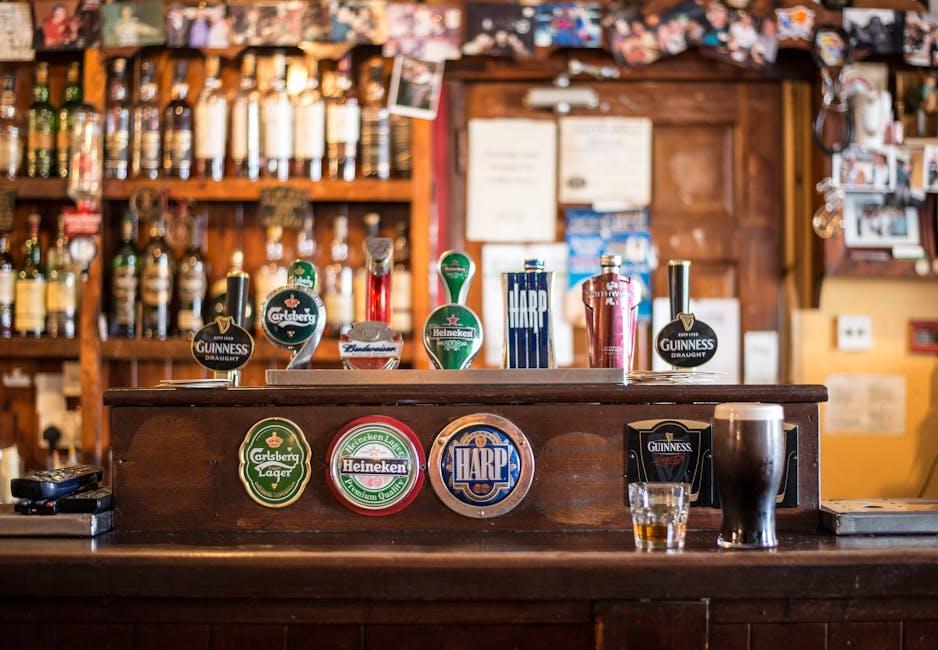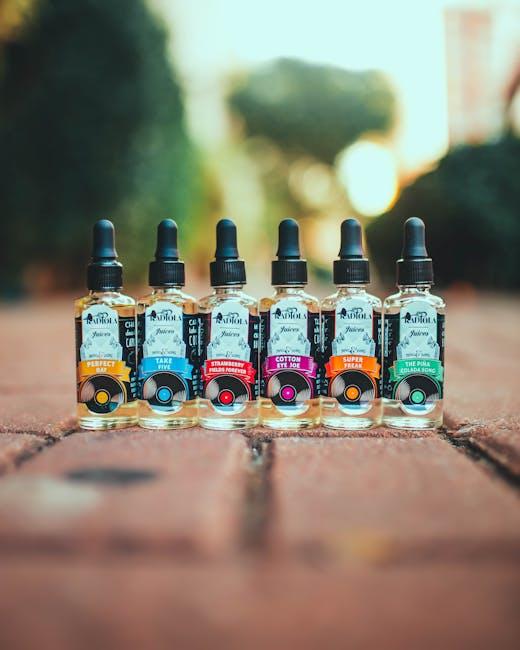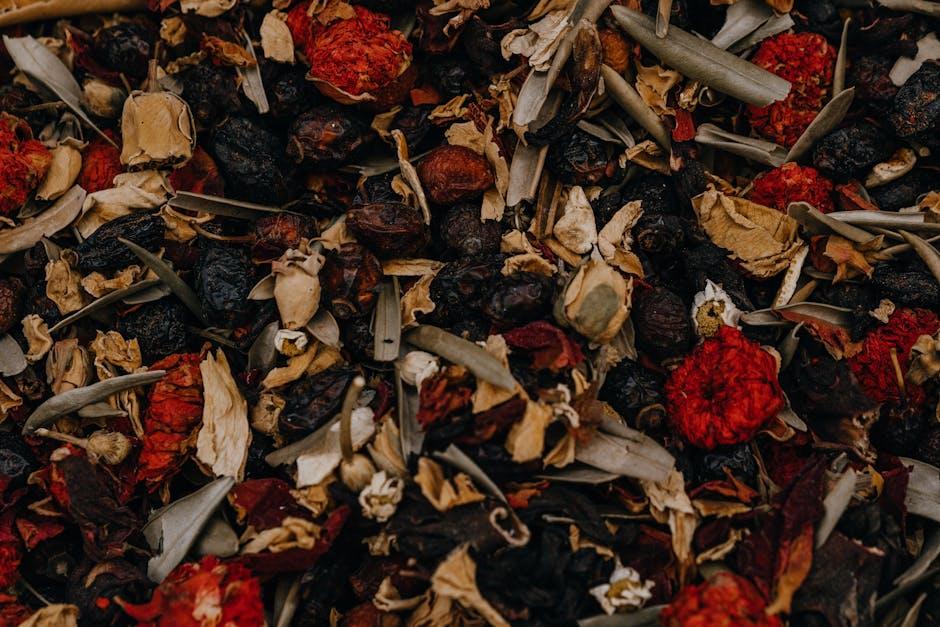Table of Contents
- The Origins and Health Benefits of Caffeine-Free Kombucha
- How to Brew Your Own Kombucha Without Caffeine
- Top Brands Offering Delicious Caffeine-Free Kombucha Options
- Flavor Profiles of Caffeine-Free Kombucha to Satisfy Your Taste Buds
- Incorporating Caffeine-Free Kombucha into Your Daily Routine
- Q&A
- Wrapping Up


The Origins and Health Benefits of Caffeine-Free Kombucha
Kombucha is a fascinating beverage with roots tracing back thousands of years to ancient cultures in Asia, particularly China. Traditionally, it was revered not just for its taste, but also for its potential health benefits. This fermented tea drink is made using a symbiotic culture of bacteria and yeast (SCOBY), which transforms sugary tea into a fizzy, tangy drink. Caffeine-free kombucha, made with herbal teas or decaffeinated tea leaves, offers the same delicious flavor profiles and probiotic qualities without the stimulating effects of caffeine. Its increasing popularity signals a shift towards healthier beverage choices, appealing to those looking for a refreshing drink that can fit into a wellness-focused lifestyle.
The health benefits of caffeine-free kombucha are extensive and notable. Due to its fermentation process, this beverage is rich in probiotics that can aid in gut health, enhancing digestion and nutrient absorption. The fermentation also produces beneficial organic acids and enzymes, which can contribute to overall wellness. Some of the commonly touted health benefits include:
- Improved Digestion: Probiotics in kombucha support a healthy gut microbiome.
- Increased Energy Levels: The drink can provide a natural boost without the jitters of caffeine.
- Antioxidant Properties: Kombucha contains antioxidants that combat oxidative stress.
- Detoxification: It may help the liver process toxins more efficiently.
When comparing the health benefits of caffeine-free kombucha to its caffeinated counterpart, several factors come into play. Here’s a simple table illustrating key differences:
| Caffeine-Free Kombucha | Caffeinated Kombucha |
|---|---|
| Lower stimulant effect | May increase alertness |
| Suitable for those sensitive to caffeine | Not recommended for individuals avoiding caffeine |
| Can be enjoyed at any time of the day | Best consumed in moderation |
Choosing caffeine-free kombucha can allow everyone to enjoy the refreshing taste and potential health benefits associated with this ancient drink, all while avoiding the side effects that come with caffeine consumption. This variation opens the door to a broader audience and encourages more people to explore the myriad of flavors and health advantages that kombucha has to offer.
How to Brew Your Own Kombucha Without Caffeine
If you’re looking to enjoy the tangy flavors of homemade kombucha without the jitters that come from caffeine, you’re in luck. Brewing your own caffeine-free kombucha is not only simple but also an empowering process that allows you to customize flavors to your taste. The secret lies in selecting the right base ingredients. Instead of using traditional black or green tea, consider using herbal teas like rooibos, hibiscus, or peppermint. These varieties are naturally caffeine-free and offer a delightful twist to your kombucha.
To start brewing, gather your ingredients and equipment. Here’s what you’ll need:
- 1 SCOBY (Symbiotic Culture of Bacteria and Yeast)
- 1 cup of sugar (white or raw, for fermentation)
- 8 cups of water (filtered is always best)
- Herbal tea of your choice (3-4 tea bags or equivalent loose leaf)
Begin by boiling the water and steep the herbal tea for about 10 minutes. After the tea has steeped, remove the tea bags and stir in the sugar until fully dissolved. Allow the mixture to cool to room temperature before transferring it to a large glass jar. Add the SCOBY and cover the jar with a breathable cloth secured with a rubber band. Fermentation is essential and usually takes about 7-14 days. The longer you allow it to ferment, the less sweet and more tangy your kombucha will become.
Once fermentation is complete, it’s time to flavor your kombucha! You can experiment with various fruits, herbs, and spices to infuse your brew. Here are some popular flavor combinations to try:
| Flavor | Ingredient Suggestions |
|---|---|
| Berry Bliss | Strawberries, blueberries, and raspberries |
| Citrus Zest | Lemon, lime, or orange slices |
| Herbal Refresh | Mint leaves, ginger, or basil |
Let the flavored kombucha ferment for another 3-7 days, then strain, bottle, and refrigerate. Enjoy your homemade caffeine-free kombucha as a refreshing beverage anytime!


Top Brands Offering Delicious Caffeine-Free Kombucha Options
If you’re on the lookout for caffeine-free kombucha that still delivers on flavor and health benefits, several brands stand out for their unique brews. Each of these brands offers a delightful array of options that cater to the more health-conscious consumer, ensuring they can enjoy the tangy sip of kombucha without the buzz of caffeine. Here are a few noteworthy brands to consider:
- Health-Ade: Known for their commitment to quality ingredients, Health-Ade offers a variety of kombucha flavors, many of which are caffeine-free. Their Pineapple Paradise and Cherry Limeade are particularly popular for their refreshing taste.
- Brew Dr. Kombucha: Brew Dr. not only provides straightforward, delicious flavors like Peach Punch and Strawberry Fields, but they also focus on using organic ingredients and sustainable practices, making their drinks a hit among eco-conscious consumers.
- Kombucha Kulture: This brand specializes in small-batch brewing, offering exciting flavors such as Blueberry Lemonade and Lavender Lemon. Their caffeine-free options are both flavorful and crafted with care.
When looking for caffeine-free kombucha, it’s important to examine the ingredients and brewing methods of each brand. Many offer an extensive selection that caters to various dietary needs without sacrificing quality. Here’s a quick comparison of some top choices:
| Brand | Popular Flavors | Caffeine-Free Status |
|---|---|---|
| Health-Ade | Pineapple Paradise, Cherry Limeade | Yes |
| Brew Dr. Kombucha | Peach Punch, Strawberry Fields | Yes |
| Kombucha Kulture | Blueberry Lemonade, Lavender Lemon | Yes |
With so many options available, it’s never been easier to dive into the world of caffeine-free kombucha. Exploring these brands opens up a festive palate of flavors while letting you enjoy the potential health benefits of kombucha without the jitters typically associated with caffeine. Whether you’re at home or enjoying a day out, these delicious, refreshing beverages are perfect for any occasion.


Flavor Profiles of Caffeine-Free Kombucha to Satisfy Your Taste Buds
When searching for the ideal caffeine-free kombucha, your taste buds will be delighted by the diverse range of flavor profiles available. From fruity to floral, each sip unfolds a new layer of taste that tantalizes the palate. Some noteworthy flavor combinations include:
- Ginger-Lemon: A zesty fusion that marries the sharpness of ginger with the refreshing kiss of lemon, offering a perfect pick-me-up without any caffeine.
- Lavender-Blueberry: This enchanting blend soothes the senses with fragrant lavender intertwined with juicy blueberries, creating a calming yet flavorful experience.
- Mango-Pineapple: Tropical vibes abound in this vibrant option, where the lusciousness of mango meets the sweetness of pineapple for a refreshing sip on warm days.
Additionally, herbal infusions can elevate the kombucha experience by incorporating unique ingredients that are both flavorful and beneficial. Consider trying kombucha varieties infused with:
- Hibiscus: This floral addition introduces a tartness reminiscent of cranberries, coupled with a deep, ruby hue that makes it visually appealing.
- Mint: For a refreshing twist, mint-infused kombucha revitalizes the drink with a crisp, cooling sensation, perfect for hydration.
- Rooibos: Naturally caffeine-free and slightly sweet, rooibos lends its warm flavors, creating a rich, soothing beverage.
The combinations are endless, and creative producers are constantly experimenting with new flavors. For those eager to explore, here’s a quick reference table showcasing some popular caffeine-free kombucha options by flavor and main ingredients:
| Flavor Profile | Main Ingredients | Notes |
|---|---|---|
| Spiced Apple | Apple, Cinnamon, Clove | Warm and cozy, ideal for fall. |
| Cucumber-Melon | Cucumber, Watermelon, Mint | Light and hydrating, perfect for summer. |
| Beet-Lemon | Beetroot, Lemon, Ginger | Earthy yet tangy, vibrant color. |


Incorporating Caffeine-Free Kombucha into Your Daily Routine
can be a delightful and health-conscious choice. This bubbly beverage offers a plethora of benefits without the jitters often associated with caffeinated drinks. Start your mornings with a refreshing glass to kickstart digestion thanks to its natural probiotics, which can help maintain a healthy gut flora. You might also consider adding it to smoothies for an effervescent twist that enhances flavor while providing added nutrients.
To further enrich your experience with kombucha, try infusing it with various fruits and herbs. Here are some popular combinations:
- Ginger and Lemon: A zesty option that’s perfect for cleansing.
- Berries and Mint: A refreshing choice that’s vibrant and tasty.
- Peach and Basil: A sweet and aromatic blend that tantalizes the taste buds.
Consider designating time in your daily schedule dedicated to enjoying this nourishing drink. Creating a ritual around kombucha can amplify its benefits. Try sipping it during your midday break, or indulge in it as a post-workout recovery drink. You can even explore different brands and flavors by hosting a kombucha tasting with friends, making the experience both social and educational. If you’re curious about flavor profiles, here’s a simple comparison:
| Flavor | Notes |
|---|---|
| Lavender Lemonade | Floral and refreshing, perfect for relaxation. |
| Raspberry Lime | Tart and zesty, great for a refreshing boost. |
| Mango Ginger | Sweet with a hint of spice, energizing and satisfying. |
Q&A
Q&A: All About Caffeine-Free Kombucha
Q1: What is kombucha, and how is it made? A1: Kombucha is a fermented beverage made from sweetened tea (typically black or green) that is fermented using a symbiotic culture of bacteria and yeast, commonly referred to as SCOBY. The fermentation process not only creates a tangy, effervescent drink but can also lead to a variety of health benefits. However, the caffeine content in traditional kombucha comes from the type of tea used.Q2: Does traditional kombucha contain caffeine? A2: Yes, traditional kombucha generally contains some level of caffeine, depending on the tea used. Black tea typically has the highest caffeine content, while green tea has moderate levels. As the fermentation occurs, some of the caffeine can be reduced, but not eliminated completely.
Q3: What is caffeine-free kombucha, and how is it different? A3: Caffeine-free kombucha is made using herbal teas or caffeine-free alternatives such as rooibos or fruit infusions. This allows individuals who are sensitive to caffeine or looking to avoid it altogether to enjoy the refreshing and probiotic benefits of kombucha without any stimulating effects. The fermentation process remains the same, enabling a similar flavor profile without caffeine.
Q4: Are there any health benefits to drinking caffeine-free kombucha? A4: Absolutely! Caffeine-free kombucha still contains beneficial probiotics, which can aid digestion and promote gut health. Additionally, it may provide antioxidants and other nutrients, depending on the herbs or fruits used in the brewing process. This makes it a refreshing and healthy alternative, particularly for those who are caffeine-sensitive.
Q5: Can I find commercially available caffeine-free kombucha? A5: Yes, many brands now offer caffeine-free kombucha options. You can usually find them in health food stores, specialty beverage shops, or online. When selecting, check the label to ensure it specifically mentions being caffeine-free, as products can vary.
Q6: How can I make my own caffeine-free kombucha at home? A6: Making your own caffeine-free kombucha is simple! Start by brewing a caffeine-free tea such as herbal tea or rooibos. Sweeten it with sugar or honey, let it cool, and then add your SCOBY. Ferment the mixture for about 7-14 days, depending on your taste preference. You can experiment with flavors by adding fruits, herbs, or spices during the secondary fermentation process!
Q7: Is caffeine-free kombucha suitable for everyone? A7: Generally, yes! Caffeine-free kombucha is a great option for pregnant individuals, those with caffeine sensitivities, or anyone looking to reduce their caffeine intake. However, as with any fermented food or drink, it’s wise to consume it in moderation, especially for those who might react to the probiotics or sugars present.
Q8: Are there any downsides to drinking caffeine-free kombucha? A8: While caffeine-free kombucha is generally safe for most, it’s important to be mindful of the added sugars that can be present, which may vary by brand. Additionally, as with all fermented beverages, overconsumption can lead to digestive discomfort. It’s best to enjoy it as part of a balanced diet!
Feel free to mix and match or add your own personalized spin on these questions and answers to create a more comprehensive piece!
